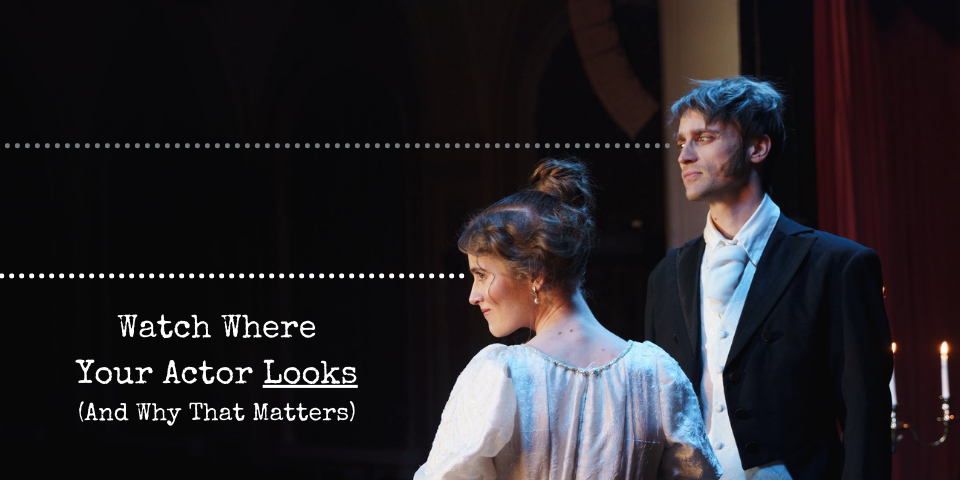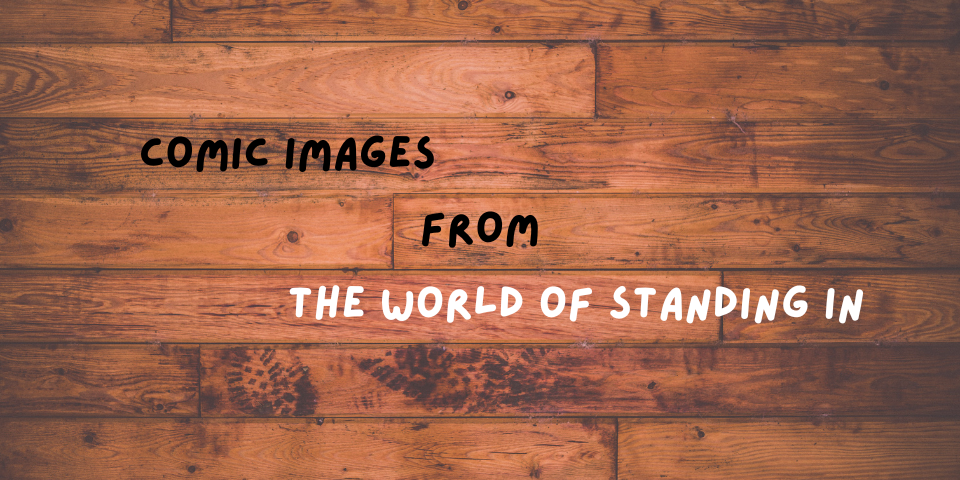Most stand-ins in TV and film watch marking rehearsals for where their actors stand and move in a scene.
For many stand-in jobs, simply doing that is just fine.
However, some jobs require stand-ins to be more observant during marking rehearsals.
When you watch where your actor looks in a marking rehearsal, not only do you help some productions figure out shots, but you can also help predict the length of a shoot — and your wrap time!
Read on for more insight.
Watching Where Your Actor Looks
When your actor is in scenes with other actors, it can be important to know at which actors your actor looks.
In addition, it can be important to know if your actor looked at a computer screen (or not), a smartphone (or not), some far-off object (or not), etc.
Pay attention during marking rehearsal for where your actor throws looks in a scene.
Sometimes DPs will ask stand-ins whether or not their actors looked at certain actors or certain things in a scene. That answer helps inform what production shoots (or doesn’t shoot).
The Implications of Your Actor’s Looks
For each look your actor makes, the implication is there will be at least one shot of the actor looking (a “single”), and at least one shot of the person or thing at which the actor is looking (a “turnaround”).
While this is definitely not always the case, it is a general principle that applies for many scenes you will shoot.
So, if your actor is facing another actor in a scene, at minimum there will likely be a single on your actor and a turnaround onto the other actor — i.e., two camera setups.
Additional Implications of Where Your Actor Looks
In addition to singles and turnarounds, other shots implied by where your actor looks are tighter versions of the shot (including “closeups”) and “inserts.”
Sometimes tighter shots and closeups are additional camera setups. But often they are simply a lens swap. Many productions keep actors on set when they are just swapping a lens rather than call in second team. So while singles take some time to set up, most tighter shots take less time to set up.
Inserts are usually very tight closeups on objects or hand business. Usually they amount to a special kind of turnaround on an actor. Many times inserts are shot on a different day along with other insert shots for other scenes, so they aren’t always part of the shoot for the day. But if they are, they will add some time to a shoot day.
Don’t Forget Wide Shots
Most productions start shooting the scene in a “wide shot” that contains most of the scene’s action.
In fact, a common sequence for shooting a scene is to start with a wide shot, then shoot singles, then shoot turnarounds, and maybe finish with any inserts.
Specials
In addition, a special shot (a “special”) may be shot at any time in this sequence.
Specials are unusual, creative, or artistic shots that directors sometimes want to shoot.
So How Many Shots?
In a basic scene with your actor talking to another actor across the room, you might expect the following to be shot:
- a wide shot
- a single on your actor
- a tighter shot of your actor
- a turnaround on your actor (which may double as the single for the other actor)
- a tighter shot of the other actor
Knowing this, you can start to get a sense of how much time it will take to set up and shoot these five shots.
However, say your actor gets a text in a scene, then look across the street at a third actor who sent the text. If your actor looks at the text, then at the third actor. that implies some more shooting.
Among the additional shots production might set up include:
- a wider shot including all three actors
- a turnaround of your actor looking at the text (i.e., an insert of the smartphone screen)
- a single on the actor across the street
- a turnaround on the actor across the street (which may double as another single on you, from this third actor’s perspective)
Essentially, when you have three actors in a scene as opposed to two actors, shooting the scene can get more complicated. But if you watch all of the looks, it can seem less complicated.
Time Factors
TV usually shoots at a faster pace than film, so a TV show will usually shoot more pages on a day than film. So, in general, shooting a TV scene will be comparatively faster than shooting a film scene of the same page count.
Of course, other time factors like the length of the scene, number of actors in the scene, complexity of the scene, rhythms of the particular production and crew, number of specials, etc., add time to shooting a scene.
But over time, you will start to get a decent sense of how long a scene will take, even if it’s plus or minus an hour.
Coupled with callsheet information saying the time when actors for the next scene need to be ready, you can start to make educated guesses when production believes it will be done shooting a scene.
And from there, you may be able to predict your wrap time!
Your Observation Skills Are Appreciated
If production finds over time it can rely on your observations, you may increase your value to the production as a reliable and trusted stand-in. And that can mean steadier work as a stand-in, not to mention more money in your pocket from longer hours on set.
So pay attention not just to where your actor moves in a scene. Watch where your actor looks!
Any tips for watching for your actor’s looks? Share your tips in the comments below!







Leave A Comment